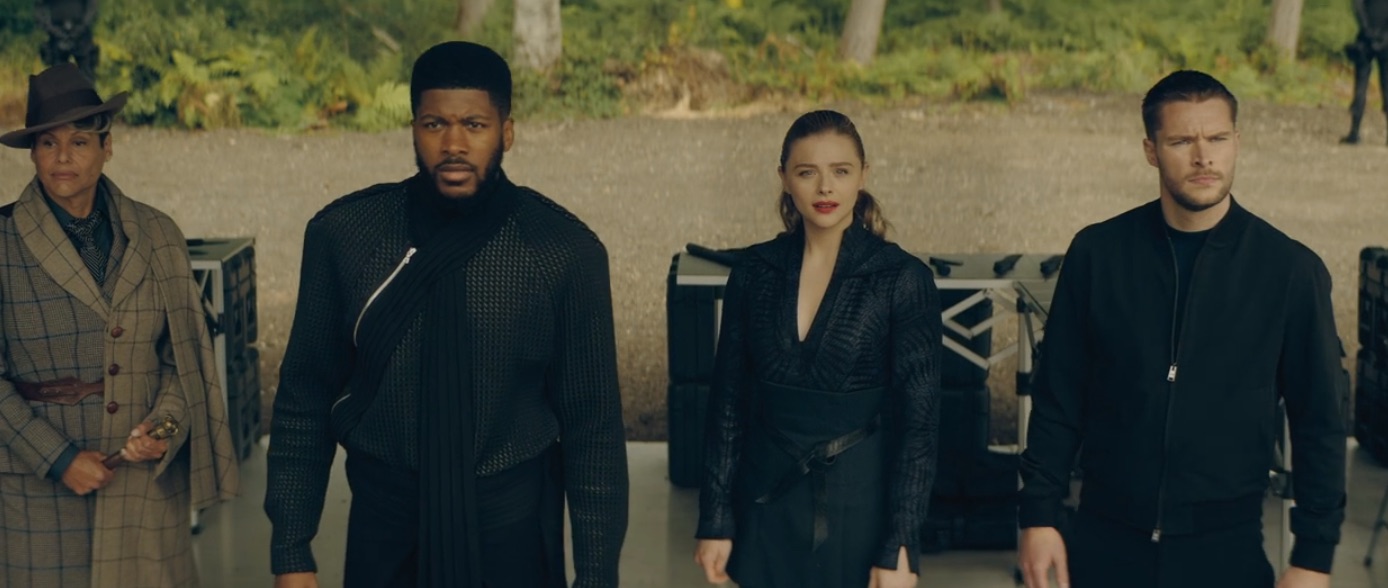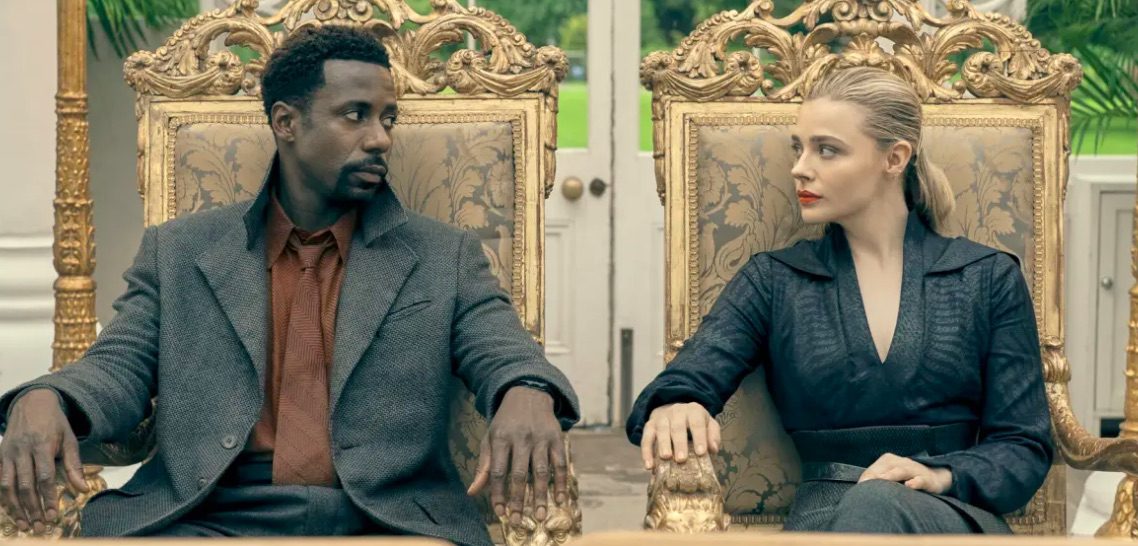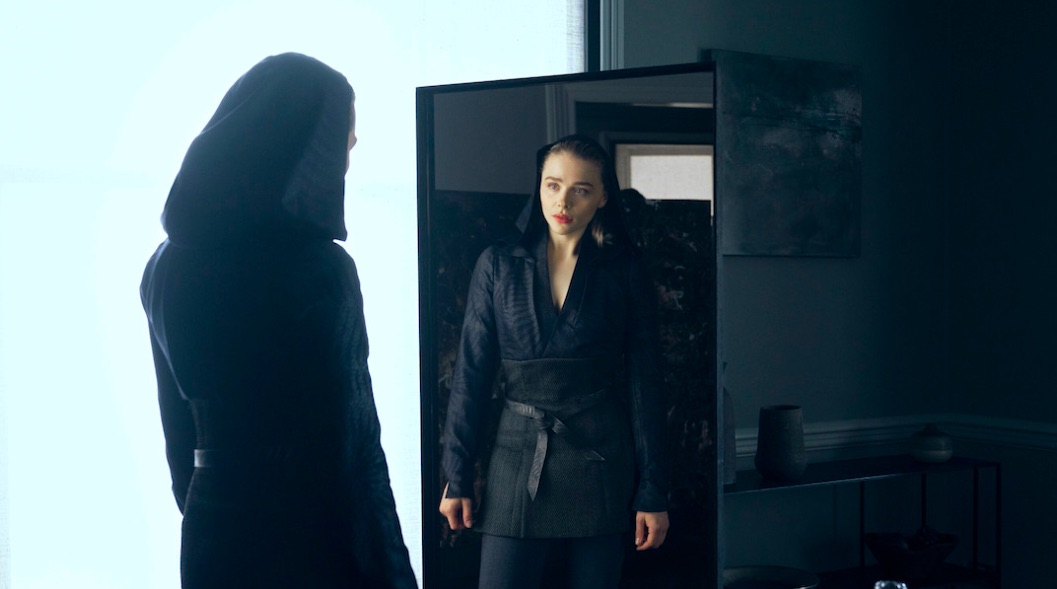Prime Video’s ‘The Peripheral’ follows the story of Flynne Fisher, who discovers a way to travel to the future without ever leaving her present. She does it with the help of a device that transfers her consciousness to the future. This means that Flynne’s body remains in her own time while her mind wanders in the twenty-second century. While this is certainly a unique way to handle time travel, there are certain questions that arise with this method. Over time, Flynne starts to understand what it all means and how to use it for her own benefit. However, that still doesn’t un-complicate things for the audience. If you want more clarity on the topic of what a stub is and what it actually means for Flynne and her time travel, then we’ve got some answers for you. SPOILERS AHEAD
What is a Stub?
One of the things that make the genre of time travel so mind-bending is the question of the future affecting the past. If you can go back in time and change things, then doesn’t that invariably change things in the timeline and change the future as well? ‘The Peripheral’ would have been plagued with this dilemma too. But it finds its way around this question by introducing the concept of stubs, which completely washes away any paradoxes that might question the nature of its reality.

To understand stubs, let us consider the main timeline, the one that hasn’t been touched with time travel yet. Here events happen from point A to B to C, with no one meddling with anything. In this timeline, let’s say, at point F, someone finds a way to contact the past. The moment that they make contact, they have changed the natural course of events. However, that doesn’t mean that their own timeline has changed. In fact, the moment of contact leads to the branching out of a new timeline, called a stub. This stub shares the same course of events with the main timeline until point F. From here, point G will look very different in the main timeline and the stub.
Considering this, one can say that a stub is a parallel timeline. For as many times that the future makes contact with the past, new stubs are created, each of them taking its own path from that point forward. In the show, one can consider Wilf and Lev’s timeline to be the main one, while Flynne’s timeline is a stub. Inspector Ainsley Lowbeer, later, tells Flynne that the stub was created by the Research Institute at least a decade before Flynne came to know about it. So, if Flynne is from 2032, then it means that the RI made contact with the past sometime in 2022. Before that, Flynne and Wilf were part of the same timeline. But after 2022, they belong to two different worlds.
What makes the concept of stubs more interesting, and more logical, is that it does away with the intention of changing the past and the future in the same timeline. In simpler terms, it means that time-traveling can never happen in the same timeline. It can only take place across parallel universes, i.e., stubs. This means that a better world can be created, but it would probably not be the same world that you live in. For example, in Flynne’s world, the Jackpot hasn’t happened yet. People like Wilf and Inspector Lowbeer can help her stop the Jackpot and save her world, but they can never do the same for their own.

Another thing that makes the stub thing interesting is that the people in the stub aren’t aware of the fact that they are in a stub until they are made aware of it. So, one could be living in a world, believing that theirs is the only timeline until someone tells them otherwise. This raises another question: how does one know they are not the stub? How does the timeline creating a stub know that it is not a stub itself? Could it mean that the future that Wilf, Lev Zubov, Cherise Nuland, and Aelita West live in is also a stub of another timeline and they just don’t know it yet?
This line of questioning sounds similar to the simulation within a simulation or a dream within a dream kind of thing. For now, the show has not touched upon it, however, it does hint towards exploring this aspect further when, in the finale, Flynne opens a stub of her own. According to it, she is dead in her original timeline, but because she branched out just before her death in it, she is very much alive in the new stub. Because the branching out was pretty recent, she retains all the information from her previous stub, which means that she is, for all intents and purposes, the same Flynne, and yet her world will have a different fate than the stub she originally came from.


You must be logged in to post a comment.